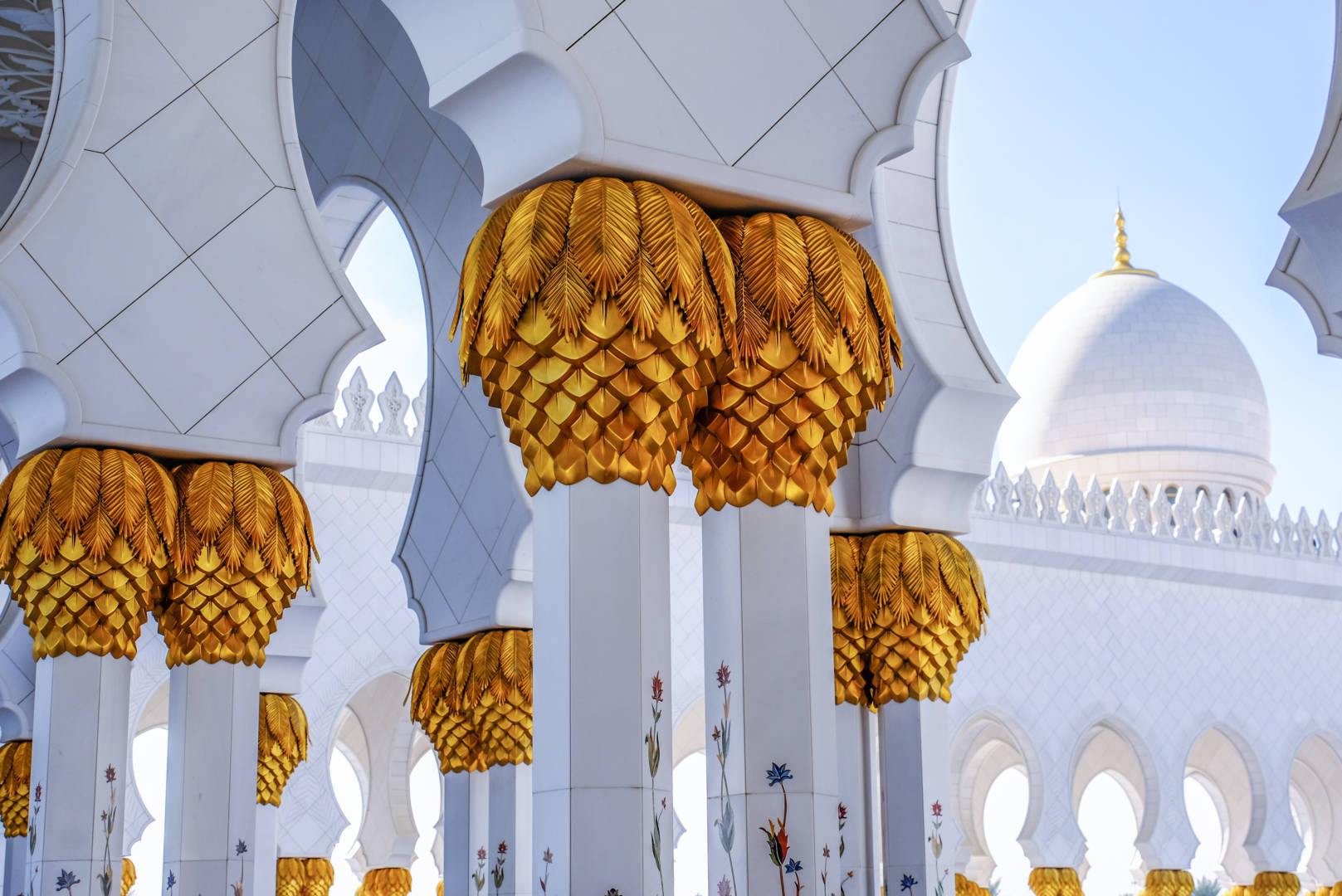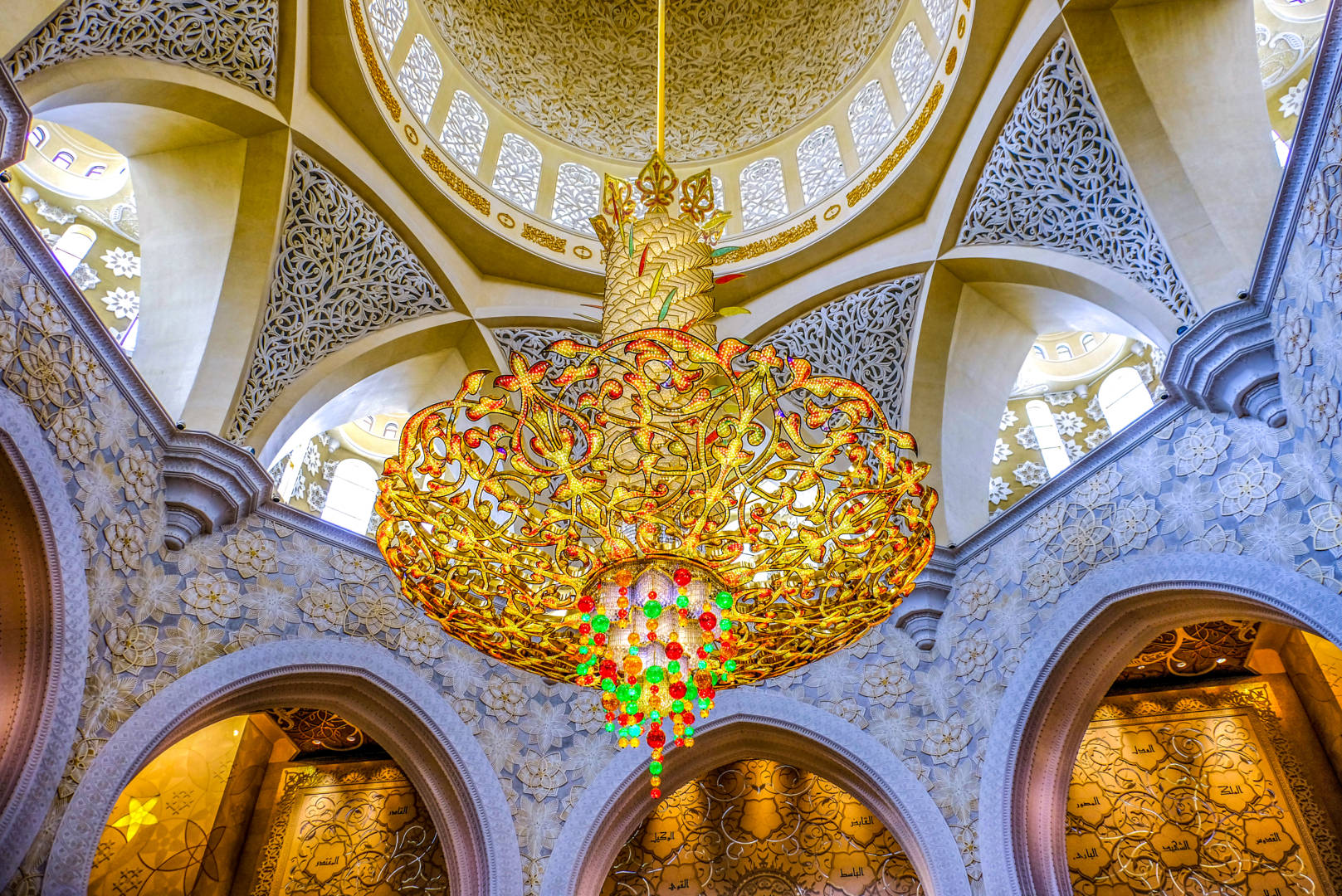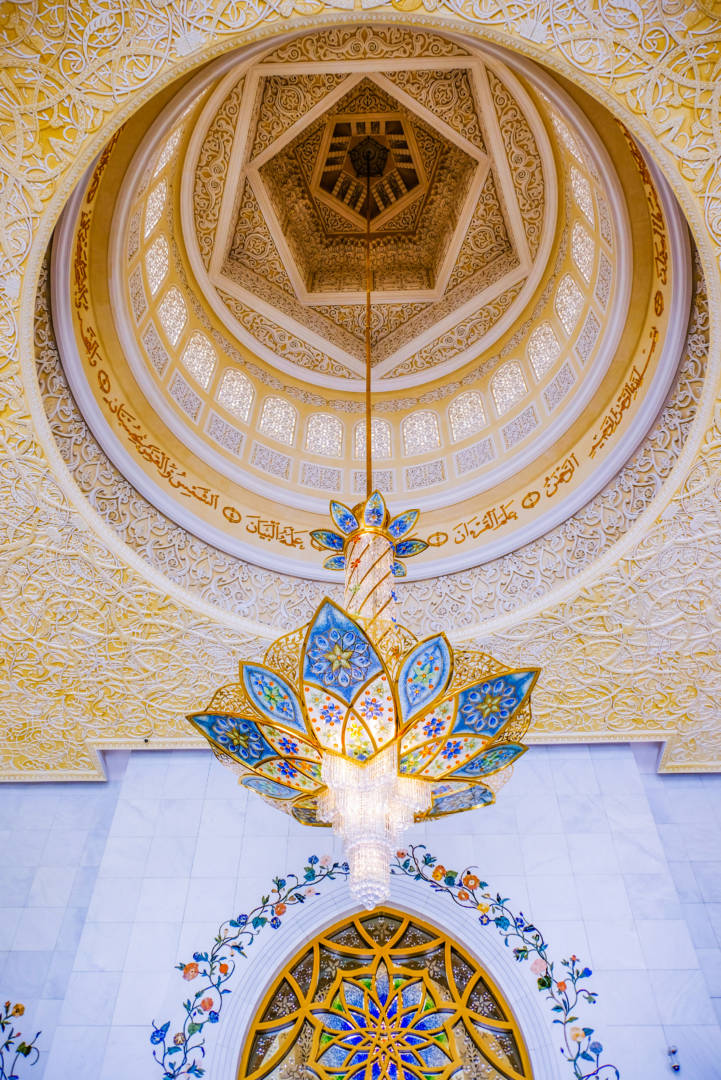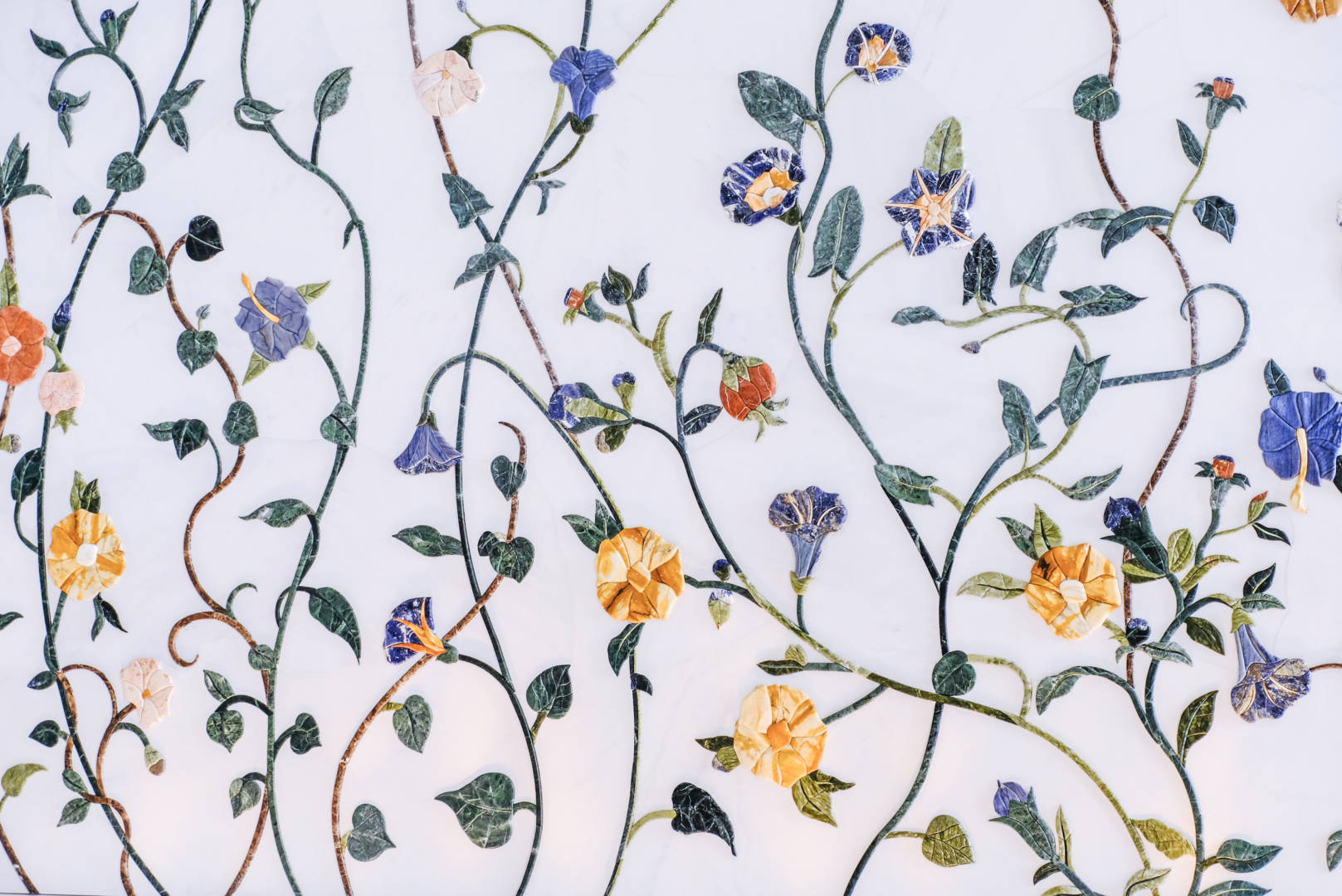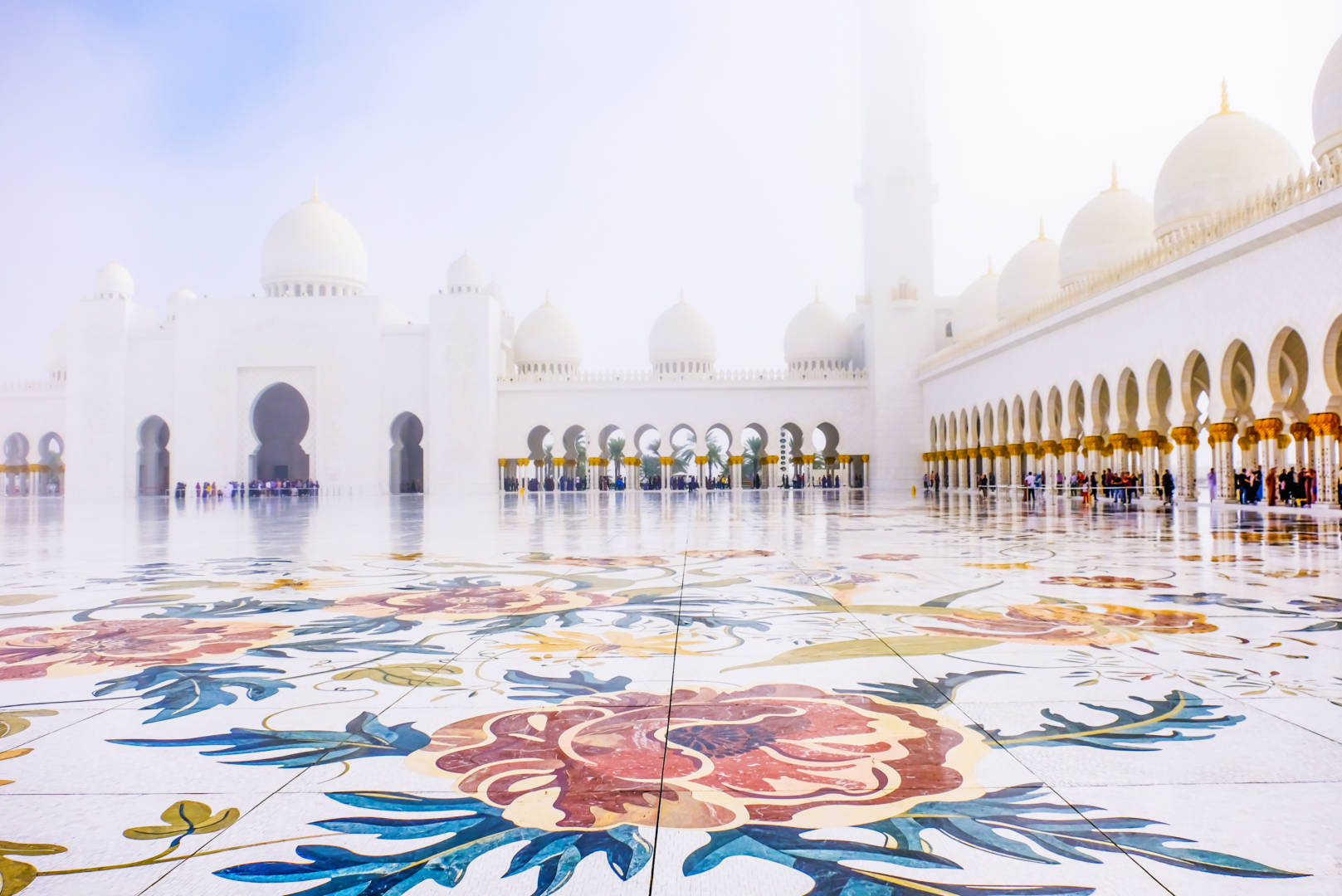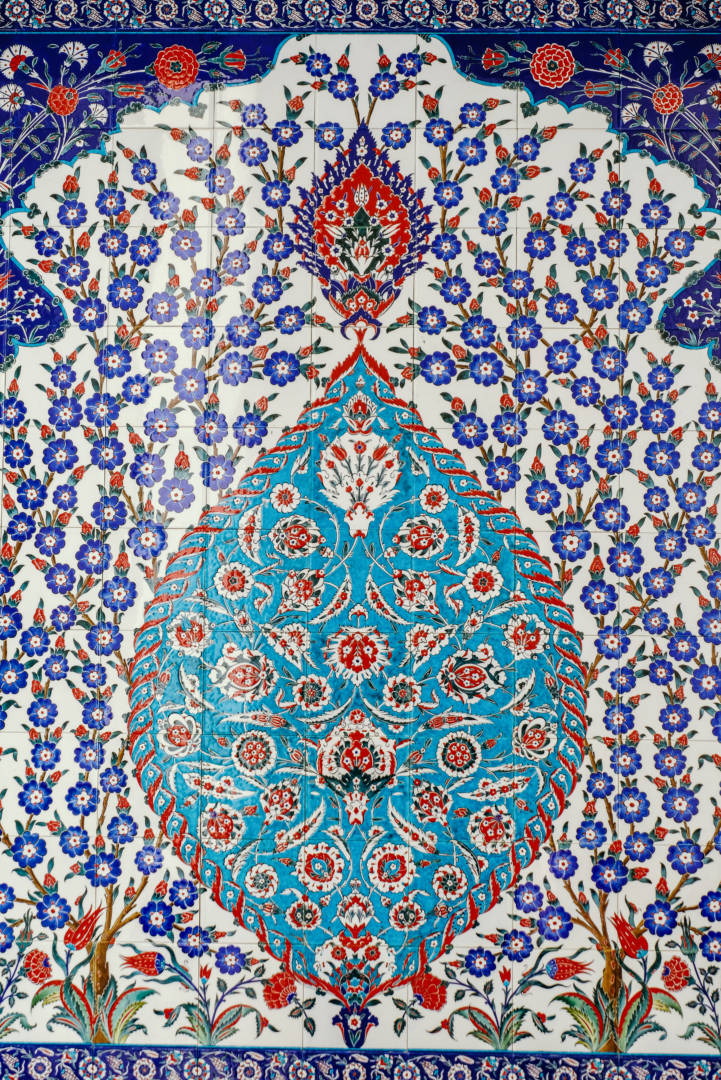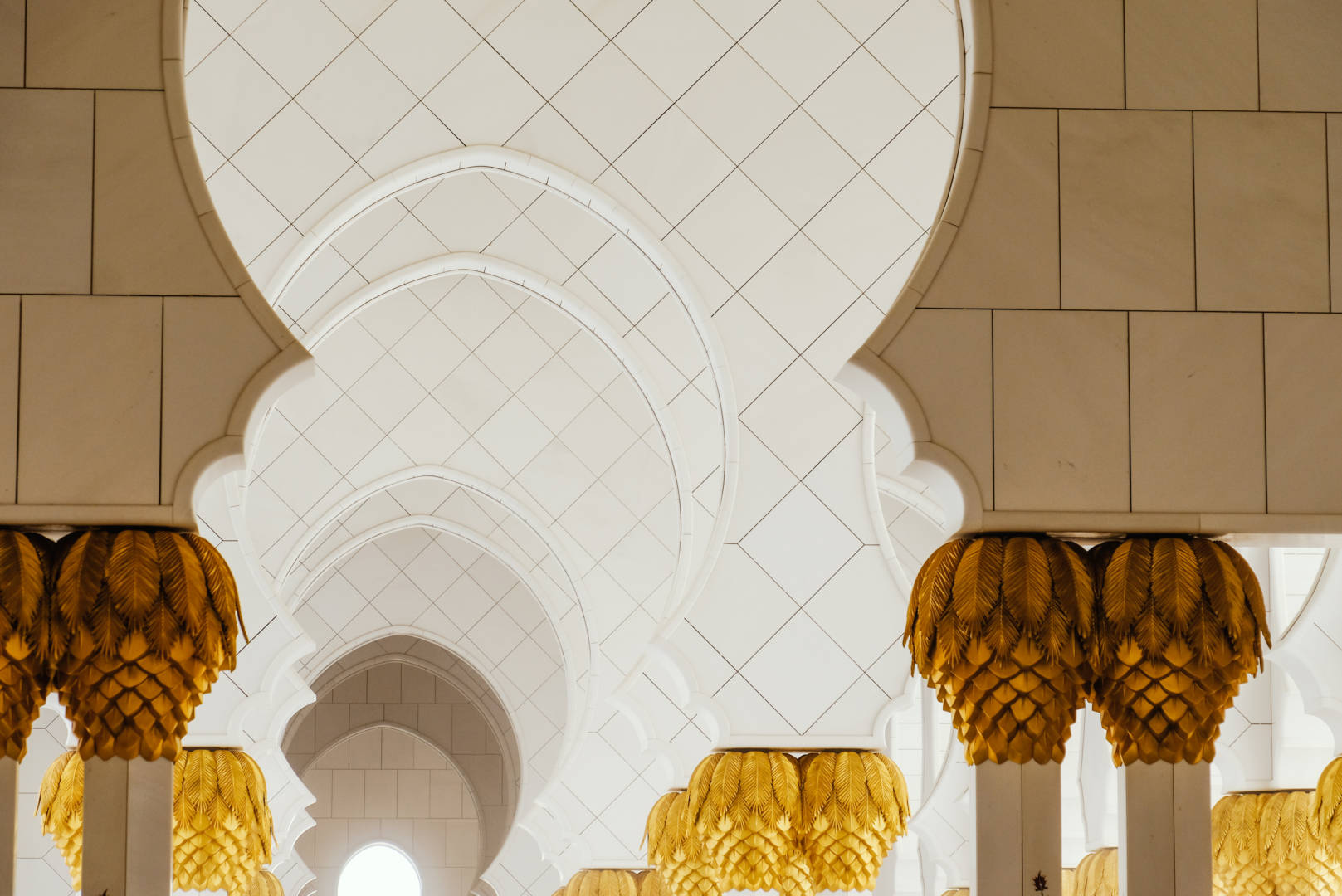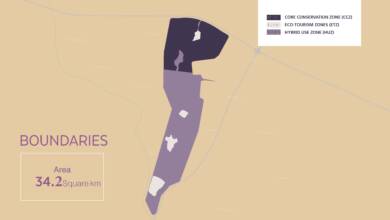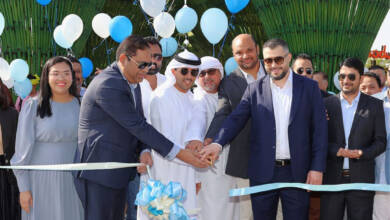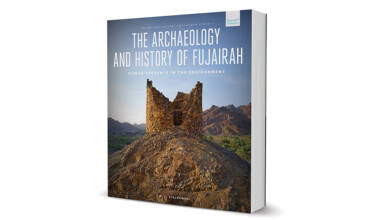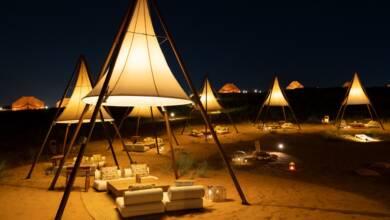Work on Abu Dhabi’s beacon of splendor started in 1996 and took 12 years to complete at the reported cost of around $545 million. Now the third-largest mosque in the world at 22,412 square meters, it covers an area equivalent to nearly four football fields.
It holds more than 40,000 worshipers and has three Guinness World Records, for largest handwoven carpet and the biggest chandelier, as well as the largest dome of its kind in the world.
Spiritual significance and endless superlatives come together under 82 white marble domes, 1,096 exterior columns, 96 semi-precious jewel-encrusted internal columns and seven 24-carat gold plated Swarovski crystal chandeliers, making it the jaw-dropping centerpiece of the city’s cultural legacy.
The Sheikh Zayed Grand Mosque takes its name from the UAE’s first president and the ruler of Abu Dhabi, the late Sheikh Zayed bin Sultan Al Nahyan, who conceived the idea.
He took architectural direction of the project with his wish for it to be his final resting place. After his death in 2004, his body was buried in the mosque’s courtyard.
The spectacular monument was designed by Syrian architect Yousef Abdelky. Inspired by Persian, Mughal and Moorish architecture, it was a truly international collaboration of more than 3,000 artisans from 38 global construction companies.
Arguably the real opulence is in the tiny details, such as precious stones like amethyst and jasper embedded into the columns and the intricate floral patterns in mother-of-pearl radiating across the walls.
British artist and illustrator Kevin Dean, who came up with the floral designs that adorn the mosque, describes being involved in one of the world’s most exciting architectural projects as “life-changing.”
Fellow Royal College of Art peer, Professor Salma Damluji, had put forward Dean’s name for the project and he was appointed by the late Sheikh Sultan bin Zayed (son of the late Sheikh Zayed bin Sultan Al Nahyan) who was also responsible for overseeing the mosque’s construction.
“I sent my portfolio across and a few days later I was on a plane to Abu Dhabi to meet Sheikh Sultan,” Dean, who’s also worked with the Natural History Museum in London, recalls.
“He was a lovely guy and had a lot of ideas about the mosque as he didn’t want it to be traditionally decorated with Islamic geometrics.”
Dean was stunned to be given free rein on the project.
“It was as much an artistic feat as it was a logistical one, in many ways,” he says. “To think I get such huge restrictions for projects like book illustrations but I was so lucky to have creative freedom for a project of this nature.”
Despite working on the project for close to four years with frequent trips to Italy to see the designs being made — it took more than 30 million pieces of marble — nothing prepared Dean for the moment his botanical designs came to life around the 17,600-square-meter main courtyard.
“I couldn’t quite believe it,” he says. “It was incredible and so beautiful.
“For the main courtyard I used flowers that can be found in the Middle Eastern region. In the main prayer hall, the species come from the Middle East; at the north entrance, they come from the northern hemisphere; and at the south entrance, they come from the south.
“Sheikh Sultan really liked that idea as he saw the Islamic faith as being incredibly international and my designs reflect that.”
Sheikh Zayed Grand Mosque Center: https://www.szgmc.gov.ae/en/

